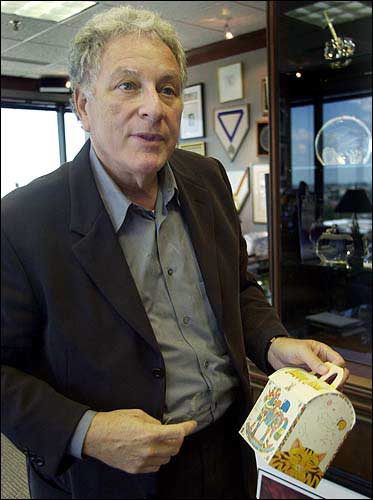K.C. marketer behind Happy Meals’ success
McDonald's marks 25 years of profitable menu item
Kansas City, Mo. ? Bob Bernstein’s 9-year-old son ate the same cereal from the same box every morning and stared at the packaging so intently, it could only inspire the advertising executive to action.
“I got to thinking,” Bernstein, 66, said from his office at Bernstein-Rein Advertising Inc., “kids want something to do while they’re eating.”
And so, the idea for McDonald’s Happy Meal was born.
A quarter-century after the product’s national release, a Happy Meal has become a veritable right of passage for an average American child and a staggering success for McDonald’s.
Happy Meals account for about 20 percent of McDonald’s overall sales — roughly $3.4 billion last year — and fuel sales from parents that further help the company’s bottom line. They’re now served at 31,000 restaurants in more than 100 countries and have made McDonald’s the world’s biggest distributor of toys.
In a word, marketing experts agree, it was brilliant.
“Happy Meals proved that you could actually “brand” a meal and make children harass their parents for it,” said Adam Hanft, an expert on consumer marketing and business strategy.
Exactly as Bernstein had planned.
“My feeling was if you get the children to think about McDonald’s, mom would bring them there,” he said.
What set the meal apart was the way it paired food and entertainment — an idea later advanced with McDonald’s addition of play areas.

Bob Bernstein holds an original Happy Meal box at his Bernstein-Rein Advertising Inc. office in Kansas City, Mo. Bernstein, who was pictured Thursday, is the inventor of the Happy Meal, which is 25 years old.
“Up until that point, McDonald’s was just a restaurant,” said Jay Lipe, a marketing consultant who authored “The Marketing Toolkit for Growing Businesses.”
“But with the advent of the Happy Meal, it also became a very convenient toy store,” Lipe said.
Bernstein’s firm had been working with McDonald’s franchisees for 10 years when he was challenged to create a promotion that would bring children back under the golden arches.
He holds the patent for the product’s packaging and a bronze Happy Meal in his office — a gift from McDonald’s on the meal’s 10th anniversary — thanks him “for bringing the Happy Meal, a bold idea, to the McDonald’s system.”
Still, McDonald’s credits, Dick Brams, its former advertising manager in St. Louis, as “Father of the Happy Meal.” He asked Bernstein to develop a children’s meal concept, McDonald’s says.
The Happy Meal — with a burger, fries, soft drink, toy and cookies (no longer included) — debuted in St. Louis, Kansas City, Phoenix and Las Vegas in 1977. It was tested in four other markets before being released nationally in the summer of 1979.
It helped streamline McDonald’s operations and was a predecessor to its order-by-number menu. It wasn’t the first such product at a restaurant, but it was the first to be so widely available.

